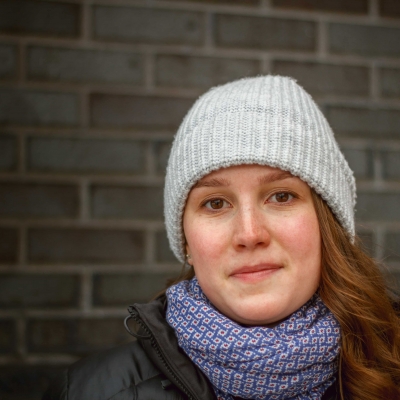Hospital Whistleblowers Go Public About Unsafe Protections That Are Exposing Health Workers & Patients to Coronavirus
A masked woman tries to speak to someone through an iron fence. © Wikimedia Commons modified for Public Herald
Hospital Whistleblowers Go Public About Unsafe Protections That Are Exposing Health Workers & Patients to Coronavirus
A Public Herald Exclusive Interview…Listen/Subscribe to the Podcast »
SUBSCRIBE »
iTunes | Stitcher | Google Play | Podbean | Radio Public | Spotify | Castbox
by Kristen Locy and Joshua B. Pribanic for Public Herald
April 1, 2020 | Project: COVID19 | Podcast: newsCOUP
This exclusive report covers healthcare worker interviews from three regional hospitals in southwest Pennsylvania.
“Patient one” in the Lombardy region of Italy (an epicenter of the outbreak) was identified in the third week of February, but his infection stunned healthcare workers. He had not traveled outside the country nor been in contact with anyone from China. This suggested he was infected through “community spread” — i.e. no one really knows how it happened.
Experts now say the virus had been active in Italy for weeks by that time, being spread and mistaken for the flu and other viruses.
The same story that played out in Europe is now in the United States as western countries failed to take the virus seriously enough early on.
In the United States, the first case of community spread was a teenager in Washington State with no travel history or ties to China. He was identified by Dr. Helen Chu, an infectious disease expert from Seattle who disobeyed the government to do her own testing for COVID-19 in late February. This setback by the US government put hundreds of millions of citizen’s health at risk, and it has left our healthcare workers unequipped, unprepared, and in the wake of contracting the illness themselves.
In a recent interview with NPR, Dr. Marion Koopmans (kope-mahns), director of the World Health Organization collaborating center for emerging infectious diseases at Erasmus Medical Center, explained emerging evidence of this “stealth virus” affecting healthcare workers. While conducting COVID-19 disease surveillance in the Netherlands, Koopmans noticed a handful of untraceable COVID-19 cases. So, Koopmans and her team started testing healthcare workers for the virus in the hospitals where these untraceable patients had been. Koopmans found 6.4% of the healthcare workers were already infected .
According to Koopmans there were:“…very rapid, very high levels of virus in the nose and in the throat” (NPR 9:49-9:55) of the healthcare workers despite barely half reporting a fever and the majority reporting working while mildly ill. The alarm went off when it was clear that even if these healthcare workers had mild or even no symptoms, they could still unknowingly transmit the virus to patients by not wearing proper protection.
Her data released this Friday is the first research to show the effects of the virus on healthcare workers and proves the “insidious nature” of the disease.
This new evidence that healthcare workers are unknowingly spreading the virus is particularly worrisome. An earlier coordinated effort across the US to contain the virus has now passed. According to Donald McNeil Jr., a science and Health Reporter for The New York Times:
DONALD MCNEIL: (1:54 – 2:16) “You know, some people have said this is like a war, and it’s as if your army has been marching forward and the enemy has been shooting at you for 2-3 weeks now, and nobody has yet looked down to see whether or not they’re bleeding. But very soon, we will see how many people have been hit.”
As of now the US has surpassed Italy for COVID-19 infections, and our healthcare system is right behind theirs for maximum capacity. This could mean our facilities would face a collapse if the virus is not contained and our healthcare workers are not protected.
According to Italy’s National Health Institute on Friday nearly 10% of those infected are healthcare workers. On Friday, the Italian Association of Doctors reported that 51 doctors have died from COVID-19.
In the United States, it is unclear exactly how many healthcare workers have been infected due to a severe lack of testing – even for healthcare workers. Therefore, we are relying on each state to release their own data. On Wednesday the Director of the Ohio Department of Health reported that about 16% of those infected in Ohio are healthcare workers. On Wednesday, Georgia state health officials reported that two healthcare workers who died last week had tested positive for COVID-19. Also on Wednesday, an assistant nursing manager at Mount Sinai West Hospital in Manhattan died of COVID-19. The nurse was only 48. The shortage of safety gear has been so dire there that nurses have reported wearing trash bags to protect themselves.
The New York Times reported that nearly 40% of COVID-19 patients hospitalized in the U.S. are under 54 years old. In addition to the risk of the virus itself, any healthcare worker who contracts COVID-19 will be out of the workforce for a number of weeks, and those weeks are critical as the number of cases in the US will continue to rise and so will the requirements of healthcare staff.
With the average age of nurses in the US at about 50, and the risk of severity from the virus increasing with age, a dangerous forecast is on the horizon.
Public Herald has learned throughout the past week of ongoing supply shortages as Trump claimed his administration won’t be a “shipping clerk” for supplies and Mayor Bill DeBlasio took to Twitter to beg Elon Musk to supply respirators to New York City.
If you were hoping we have an adequate national stockpile of ventilators and protective equipment for a crisis like this – we don’t. We DO have a national stockpile of cheese – 4.3 pounds per person in 2018. Last month it was reported that the US has stockpiled about 30 million surgical masks and 12 million N95 masks. N95 masks and other sealed respirators provide the only full proven protection against COVID-19 for healthcare workers. Centers for Disease Control (CDC) research in 2015 estimated that a severe flu outbreak infecting 20-30 percent of the population would require up to 7.3 billion respirators in a “maximum demand scenario” which more closely resembles this COVID-19 outbreak. On Tuesday, New York Governor Andrew Cuomo expressed exasperation with FEMA (Federal Emergency Management Agency) who failed to supply their state with ventilators:
GOV. ANDREW CUOMO: (15:40 – 16:05) FEMA is sending us 400 ventilators. Four hundred ventilators? I need 30,000 ventilators. You want a pat on the back for sending 400 ventilators? What am I going to do with 400 ventilators, when I need 30,000? You pick the 26,000 people who are going to die because you only sent 400 ventilators!
Amount of medical supplies the feds have shipped to various states, relative to amount requested:
Massachusetts 17%
Maine 5%
New York 2%(and wait for it…)
Florida 200%https://t.co/T96JkoPMTF— Mark D. Levine (@MarkLevineNYC) March 29, 2020
At the beginning of this outbreak CDC guidelines stated that COVID-19 patients were to be treated with airborne and contact precautions, which under federal guidelines requires an N95 respirator. N95 respirators are fitted to each healthcare worker to block out even the smallest particles which could contain the virus. Then as the massive shortages of N95s became apparent, CDC rolled back those guidelines in the second week of March. Healthcare workers are no longer required to wear an N95 respirator at all times around a COVID-19 patient. They stated that N95 respirators should be reserved for critically ill patients or when intubating a patient, when small droplets are more likely to become airborne. According to the CDC, surgical masks, which only block larger droplets from coughs or sneezes, are acceptable if there is a shortage of N95 respirators. The CDC also recommends eye protection, gowns, and gloves for healthcare workers in contact with COVID-19 patients.
Yet, healthcare workers are scrambling to protect themselves from a virus that is unlike anything they have seen before. According to a respiratory therapist from Lousianna who interviewed with ProPublica last Thursday: “It first struck me how different it was when I saw my first coronavirus patient go bad. I was like, Holy shit, this is not the flu. Watching this relatively young guy, gasping for air, pink frothy secretions coming out of his tube.” In addition to the novelty of the virus, mixed messages from hospital administrative staff and supply shortage have led to dire situations in hospitals where the virus first emerged in the United States. In Washington State workers cited washing their masks out with bleach at the end of the day to reuse them and some were told to use bandanas for protection. The climax came when workers had to start wearing trash bags after hospitals ran out of protective gowns.
A recent report by The Intercept found a California nurse who explained she isn’t even asking for “full protective garb” like other countries are currently using, but she pleaded, “we need something.” Sean Petty, a pediatric emergency room doctor in the Bronx and member of the board of directors for the New York State Nurses association spoke on Democracy Now about the problems with healthcare workers having to work without proper protective equipment:
SEAN PETTY: (20:20 – 21:11) So, we, of course, as healthcare workers, then are not only infecting ourselves, not only infecting each other as healthcare workers, because it’s very difficult to practice social distancing in a healthcare setting when you’re, like me and Kelley are, in traumas, in tight quarters taking care of patients, we are infecting each other, and we’re infecting — we’re potentially infecting other patients. So, to contaminate our own masks and to compromise the integrity of those masks repeatedly makes those masks absolutely useless at a certain point. And you’re absolutely right that this is something that is not — something that the hospitals would have disciplined nurses prior to this, and something that they’re mandating us to do in this current context.
SEAN PETTY: (17:25 – 17:53 ) In Wuhan, China, once they realized that healthcare workers were becoming infected, and they imported 42,000 healthcare workers to help with the crisis, they outfitted them with N95 masks and full protective equipment, personal protective equipment, or PPE, as we call it. And they achieved an unbelievable zero out of 42,000 infection — noninfection rate. So zero healthcare workers out of 42,000 with full PPE were infected after they were imported into Wuhan, China.
In Georgia, an emergency room doctor was praised by Barack Obama for his “selflessness and sacrifice” as he moved into his garage for the “foreseeable future” to desperately protect his family and newborn from the virus.
Not only are healthcare workers afraid for their safety and the safety of their patients, but they are afraid to publicly talk about their experiences. A healthcare worker in Northern England tweeted last week, and later deleted, “Who looks after the patients when the doctors start dying? I feel betrayed, I feel scared, I feel like we are basically lambs to the slaughter. Paper masks and plastic aprons. What a fucking betrayal.”
This last week, I talked to three healthcare workers in Pennsylvania to get their perspective on this developing crisis. The identities of two of the workers will be concealed for their protection.
My first conversation was with so-called Nurse B, who works in a community hospital in Southwestern Pennsylvania. Our conversation started after the first COVID-19 were reported in the hospital where she worked. As hospitals cope with different amounts of cases, supplies, and guidelines, each are adapting in their own ways. But like those healthcare workers in Washington, California, and New York, these workers are also starting to feel the growing pressure of the virus endangering their safety.
NURSE B: I don’t want to say we’re low on supplies but we are low on the supplies that we actually need. And I think that, that anybody with a cough or fever, like at least two of the symptoms, they’re testing and then as soon as they get the symptoms, they’re putting them on these airborne precautions. So like we’re not sure if they have it or not. Right now, so far, I know that there’s one confirmed case.
I feel like now that there’s light to the situation, that everybody knows what’s happening they’re being more proactive about testing people and not letting us in immediately but then again there were those people that were there for a few days before this all broke out and then they were like, “okay, maybe we should test them.” And every single one of us had been in their room prior to them being on these precautions and being in their face cause we’re at their bedside taking their blood and doing what we need to do.
It’s not really the hospital’s fault that we’re not as prepared, but then again, I feel like they should always be prepared for something like this.
We had a meeting about this, and we were like,“what can we do?”
And they’re like, “we don’t know what we really can do besides use the equipment that’s given to you to stay protected and wash your hands, don’t touch your face, stay away from elderly people, and everything like that.” We’re doing what we can, but it’s hard because we don’t know what we can do to prevent it from the beginning.
What I was most worried about was the first case that they thought might have been positive. I had been in contact with this person multiple times before they were even tested and like I said, all of us were.
And I had taken a family member to surgery and they are elderly. They couldn’t pass this if they tried. They’re old with an immune system that’s not what it used to be. That’s what I’ve been thinking about. I’ve been in contact with my family and you know I’m worried about them getting it. Even though I don’t have any symptoms, I could still have it and not know.
So it’s scary because I don’t want to be passing it to anyone that can’t fight it off like I could. It’s scary because even now in the hospital, I’m still going into all these patients rooms where they’re coughing and they can’t breathe and yeah it might be for other reasons, but I don’t know that. It’s HIPAA, we’re not allowed to just be like “let me see their chart, what do they have?” We just have to go in and hope for the best, that they don’t have it and you know, just be safe by washing our hands and not touching our faces and staying away from people who are old and immunocompromised. It’s just hard.
I don’t want to breathe in their direction, but I also have to be really close to them to get their blood. And I don’t want to seem rude that I’m not talking to them because I usually do. When I go in, I say hi. Now I’m like hi, jab you with a needle and run away. It’s horrible but it’s just a part of the job I guess, doing what you can to protect these people and try to help them and make them feel better without making them more sick.
Nurse C also works as an Emergency Room Nurse at a community hospital in Southwestern Pennsylvania. She described the hospital as taking quick measures to prepare the Emergency Room to handle patients. She spoke of changes in intake procedures to try to seperate suspected COVID-19 patients from the rest. She describes how “negative pressure rooms” are being used to exhaust the “fumes” out of the infected rooms. In order to clean the rooms where suspected COVID-19 patients have been, they have to wait an hour for any particles to settle out, and then someone is able to deep clean the room. All of these extra precautions are important to protect patients and staff but they add even more pressure on hospital workers who will only become busier as hospitals are flooded in the next few weeks. Here Nuse C describes her experience with trying to obtain an N95 mask to protect herself:
NURSE C: The N95 masks, listen to this one. A week and a half ago, when I was there, I grabbed one from the back, because I thought, you know what, I’m going to wear a mask all day long anyways. I got in trouble for putting it on because I had not done the proper fitting for this year, for 2020, and there was no paperwork stating that I was properly fitted for an N95 or that I had done the fit test for an N95.
To wear an N95 you put this big thing over the top of your head like a deep plastic hood and they spray through a hole in the bottom by the throat this saccharin stuff, and if you can taste that saccharin stuff and that means you’re not properly fitted with the proper size N95 mask.
So I hadn’t been fit tested so I was not allowed to wear it. I was like, wait a second, I remember what size I wear first of all, and second of all your going deny me because of paperwork and someone hasn’t done the fit test on me, in a place where I work then I need the proper gear to wear if I want to wear it, you know? And then I guess they started getting certain people to fit test people and yesterday morning when I went in, they were like “you have to get fit tested,” and I’m like shouldn’t that have been done a couple weeks ago? They really are far behind. Or you can wear a shield, the band goes around your head and the shield comes down over your face. So you have the choice between those two, but there was only one mask and one shield left yesterday
So everybody is saving their masks, their eyeglasses, and their shields. I wanted to grab a shield but someone had taken the last one. I heard in the beginning that they weren’t testing anybody because they didn’t have enough supplies to test everybody, they could only test certain people, but if they didn’t have enough to test people and they threw those ones away… so it came down to the point where everyone who got tested, that’s the one you keep… It’s kind of scary.
And it’s so hard, the N95 mask, it’s so hard to breathe out of all day long. I wear it around my ears so my ears hurt. I have another mask, but it’s more of a tissue paper lined yellow mask, and I do wear that mostly all day, then I wear the N95 if I have to go into another room. The N95 is so, oh my gosh, you can’t breathe at all. It’s horrible.
Nurse C told me she fears the lack of equipment and how it will be even more difficult to adapt as this crisis worsens:
NURSE C: We kind of actually said to ourselves, we think covid was here beforehand, and people that maybe tested negative for the flu maybe had it, and will we ever know? Probably not. That is why everyone is really scared, because if you have the symptoms you could be spreading it.
But that is part of the problem too, is these people, everyone is panicking of course, but in the long run, we have meetings upon meetings but it’s really like are we really prepared if our situation became like Italy’s? No. We don’t have the equipment. We might have cots, we might have rooms, available schools, gymnasiums, to put people, but what do you do with the people once they’re there? Who’s going to take care of them? Where’s the proper medical equipment to take care of them? I don’t know. Or the personnel? I don’t know that either.
We don’t have the right equipment, we don’t have enough of the equipment, we really are unprepared.
Stories like this are playing out all across the US and while some workers are willing to speak out and call for better protection, many are too afraid to say anything against their employer. On Wednesday, it was reported in the New York Times that more than 1,200 health care workers have used a private online document to share stories about fighting the coronavirus pandemic on the front lines. The document was created on March 19 by Sonja Schwartzbach, a nurse in New Jersey who is studying as a doctoral student. Schwartzbach stated: “This isn’t a polite request: This is an urgent demand. Tell me your story. Share your situations. I understand that it can feel challenging to be candid as a health care provider, but this is the difference between life and death.”
Lastly, I talked to Dr. Marsha Haley who is a Radiologist in Pittsburgh, Pennsylvania. Dr. Haley is not on the “front lines” of the virus like the two nurses but she is still currently working as an “essential worker” and is deeply concerned about both the health of her very vulnerable patients and fellow healthcare workers. She explained her oncology department as “evolving rapidly” in the past few weeks to keep up with protecting patients and themselves.
Dr. Haley: As a specialist in an outpatient clinic I’m relatively protected compared to the staff in the ER, critical care, and primary care. You like we talked about, over the week the recommendations have changed with regards to personal protective equipment. We’re trying our best to follow the guidelines. In my clinic we’re tending to air on the side of caution given the vulnerable population of patients that we manage. I was personally very discouraged by the recent CDC statement that healthcare workers can use bandannas etc. for protection. This made me feel like we as healthcare workers were being viewed as expendable. You know it makes me angry and sad that there might not be enough PPE to protect me and my fellow workers.
What protective equipment are you using right now?
Ideally we’d be wearing N-95 masks, but those are extremely limited right now. So right now in clinic I’m just wearing a simple surgical mask, and I believe the therapists are wearing that at this point for asymptomatic patients if they feel it’s necessary.
Hospitals have enough PPE available for their day to day operations but when it comes to something like this, you know this is something that nobody saw coming, at least, not until it was right upon us and unfortunately we’ve had cases of people stealing our PPE right out of the hospital. You know we’ve had cases where our hand sanitizer has been taken right off the wall, our masks have been stolen from our clinic, and you know that really puts the front-line healthcare workers at risk when things like that happen. Because we’re already low on the equipment so when it’s stolen, that really makes it a critical situation.
When did you first realize the severity of this outbreak?
Yeah I think a couple weeks ago when I looked at how quickly Italy became a problem and when I saw what was happening in Italy and I’m in some social media forums with Italian doctors you could see that it was really ramping up quickly there and I think most of us saw that that was going to happen in the US. Unfortunately the social distancing was not made mandatory right away so a lot of people were discounting it thinking it was no big deal, going on with you know, congregating in crowds etc. And so that didn’t help things as well. So you know right now we are seeing this exponential rise in the number of cases. And some of that could be due to that fact that we’re testing more people, but yeah I think I probably started being concerned about it a couple weeks ago after talking to the Italian doctors on some of the forums.
What else would you like to say about the situation healthcare workers are facing right now?
I’m very uplifted by the selfless acts of my coworkers, my staff are coming in and working hard every day to provide the very best care for our patients. Despite the fact that they are scared. I’ve also seen specialty physicians brushing up on their critical care skills in case they’re drafted to help manage COVID patients. A wonderful thing about being a physician is that we all have that core of education and training, should we be needed to help in a crisis. Some of us have been notified that we may be pulled to work in other clinics. As we step up and accept this challenge, it’s imperative we have the proper tools to protect ourselves and our patients. We know that the incubation period for the disease is fairly long, when compared to something like the flu, and so it is possible that healthcare workers can contract it, not have symptoms, and potentially be infectious. So that’s a major concern as well. I prefer to air on the side of caution, and I’m sure everyone else does as well, but with the lack of PPE, it’s not always possible to do that. And you know, that’s really unfortunate.
We’ve seen the reports from Italy and now the US about those caring for the patients who have become infected, and died from COVID-19 and I believe all of us in healthcare wonder, could we be the next person that this happens to?
Here is Sean Petty again, the pediatric emergency room doctor in the Bronx:
SEAN PETTY: And I would also just add that I know nurses are getting a lot of attention right now, but it’s also our housekeepers are heroes right now, our nurses’ aides are heroes right now, the doctors. We all are coming to work. We all are doing Herculean — making Herculean efforts to make this thing work. We all are exposing ourselves to these risks. And we know that we’re at the very tip of the iceberg. And so, you know, but if not us, who else is going to do it?
What I think undermines that courage and undermines that morale for us and our co-workers is that our government doesn’t have our back, that the Trump administration and the federal authorities have done virtually nothing to get us the armor and the supplies that we need in this war against coronavirus.
According to research conducted by Jeffrey Shaman at Columbia University which was reported on in the New York Times last week, if stringent efforts aren’t taken to contain the virus, as much as 70% of the population could be infected by August 1st in some areas. To achieve containment of the virus like the Chinese have done, at least a 25% reduction in contact would have to be achieved. It is up for debate in how to achieve this 25% reduction. Professor Shaman spoke with Public Herald on Monday to explain his findings:
Shaman: What you have to recognize is that because there’s a delay between when somebody gets infected and when they’re confirmed and it’s 7-10 days. You’re not going to see in terms of new cases for a week a week a week and a half. In terms of people in the ICU, 2-3 weeks. So you’re not going to see the full effects of what you do for a while.
Which is a little challenging to deal with from a public messaging perspective. And it’s a little disheartening because you might impose a shelter-in-place and then you’re still seeing things growing and you just don’t know if it’s working for a while.
We don’t know how extreme the measures are going to have to be and if they will work so that we can protect our healthcare services and mind you, there are extreme consequences of letting a healthcare system collapse. Which is what, most likely, is going to happen, in places in this country at a minimum. Because they’re going to get overwhelmed. Hospitals run at 90% capacity. They’re going to see surges of 200%, 300%, 400% capacity. They’re not going to have the ICU beds and ventilators. It’s going to be like Italy. Not only does “all hands on deck” mean that they’re going to be there with doctors who are cardiovascular surgeons dealing with infectious disease triage, who are not equipped for it, which is going to corrupt you patient care. Not only do you not have enough equipment for it, it’s also going to compromise all other routine emergency services and routine services. You know who the hell is going to be minding the store in order to deliver dialysis? Chemotherapy? Childbirths? That goes out the window in a situation like this.
So the consequences of a collapse of our healthcare system are extreme and they will impact all corners of society in ways that will be grossly unpleasant if this steamrolls over us.
Wrecking the economy in response to this, even if we can do trillions of dollar of stimulus, you’re still going to see enormous unemployment, you’re going to see tons of small businesses shuddered, you’re going to see even major corporations perhaps go down. How are they going to rebound afterwards? IF this is something that lasts even for just 6 months and burns though us and is devastating. Or it lasts for 18, 20 months and we get a vaccine and we have fewer fatalities because of that. Are we going to let them come out into the light and restart, reboot our society? We’re not going to be able to pick up just that easily. We may be in an economic depression which has its own consequences. Plus, of course, there’s the psychological and emotional toll associated with all of this. You know the reality is we’re between a rock and a hard place on this. To handle this we don’t have experience with this type of event. What is the best way to go forward?
According to a report in ProPublica, even with the “best case scenario” with COVID-19 cases spread out over 18 months, the capacity of US hospitals would be about 95% full. That doesn’t allow much room for error. Governor Cuomo has warned that New York is on the trajectory to be just 2 weeks away from seeing as many as 40,000 people in intensive care. New York last week had 3,000 ICU beds with 80% of those beds already occupied.
Gov Cuomo: (6:47 – 6:58) One of the forecasters said to me we were looking at a freight train going across the country, we are now looking at a bullet train because the numbers are going up that quickly.
In Harvard University’s modeling of a “moderate” scenario where 40% of the US population contracts the virus and about ⅕ of those cases require hospitalization, US hospitals would need double the amount of hospital beds than they currently have. And this is just beds, this isn’t even citing the amount of PPE, respirators, cleaning supplies, test kits, etc. that workers would need to safely treat these patients.
If this same model plays out in a city like Pittsburgh, an area cited as having some of the best healthcare in the country, in a “moderate” scenario (40% of the adult population contracting the disease over a year) the region would need 2.4x the amount of hospital beds than are currently available. What is especially worrying is that the most at risk patients will require treatment in an ICU, and that is where the greatest shortage is. According to this data there are only about 420 available beds in intensive care units in Pittsburgh. In a moderate scenario, Pittsburgh would need at least 3x that capacity.
***
Do you have a story to share?
In responding to this unprecedented crisis, the US government has placed healthcare workers in harm’s way. Even though the chance to contain the virus has passed, we still have the opportunity to do more to protect our most vulnerable and our brave healthcare workers. Elon Musk can build us more ventilators. We can’t build more nurses and doctors. They will be the only ones to carry us through this crisis.
If you are a healthcare worker and would also like to tell your story, please reach out to us at Public Herald.
“…healthcare workers are your soldiers, and the war has just begun.” Dr. Lerner, an ER Doctor in Massachusetts
***
To Our Readers
The novel coronavirus, or COVID-19 or SARS-CoV-2, has shattered our assumptions, striking fear and unrest throughout the world. As I record this podcast on April 1st 2020 there are 866,642 globally confirmed cases of the virus.
We have local, state and federal government bodies updating us daily about how they’re trying to work together to reduce infection rates in the United States and get personal protective equipment to those who need it most. But at the end of the day it’s the people on the frontlines we need to hear from: I’m talking about hospital workers, grocery store workers, city services, shipping services and more; people who are most at risk for infection and are not regularly on our phones, TVs or computer screens.
The dangers facing healthcare workers are not just the possibility of infection, there’s an information war underway and some of these brave workers are whistleblowing to be sure you and I know the truth about what they’re facing on the frontlines.
At newsCOUP we recognize that during this pandemic, the need for fearless and compassionate journalism is at its highest level. Our team at Public Herald is going to move the resources we have from tackling the largest industry in America to reporting on the worst health crisis this country has faced in our lifetime. We will continue to complete our mission as journalists and provide a voice to those that would hold those in power accountable.
These stories are not always binary, they’re not just numbers and lines on a chart. Right now the most important story can come from a single individual. Your story always speaks the loudest when told in a time of struggle and conflict. If you feel you have something the world needs to hear, we are here for you, we will protect you as a source, and we will work to be sure that your story is heard. You can email myself at Public Herald [email protected] if you have a story you need to share.
In solidarity, we are going to get through this together and we are honored to have your support and your attention.
Stay safe and be well everyone,
Joshua Pribanic (co-founder Public Herald), newsCOUP host







